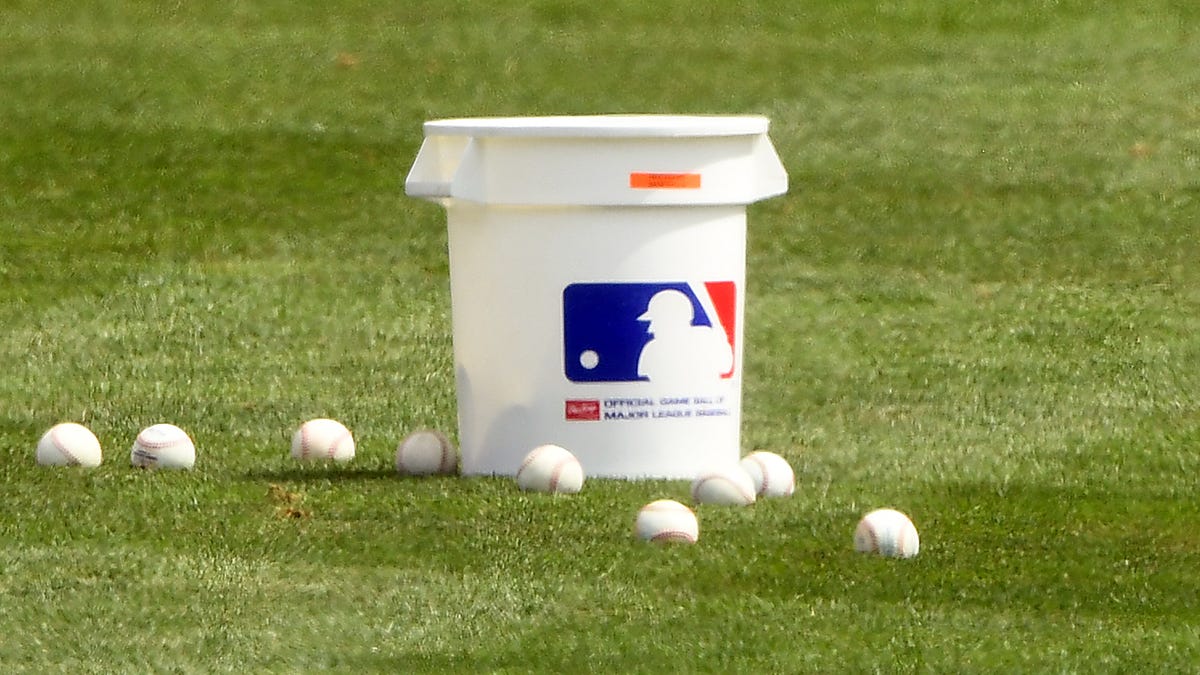Front offices are bitching about the pitcher limit, which probably means it’ll work

I get caught in the trap as much as anyone, but I’m an impulsive guy. Baseball isn’t like other sports, where you can change one rule, any rule, and see the effects on Opening Day. In baseball, everything takes some time to have an effect.
Take the new baseball. Don’t get me wrong, I still think it’s the wrong way to go, and it is punishing hitters in a sport that needs more action and scoring. Punishing hitters for squaring up a baseball perfectly isn’t the way to go.
But if you squint, you can see some of the effects. According to Baseball Reference, though homers and runs and batting average are down, and slugging is down hugely (and that’s with taking pitchers out of it completely), strikeouts are down, so are walks, and singles and doubles are slightly up. Swinging strikes are ever so slightly down, from 11.3 percent to 11.1 percent, and contact is slightly up from 76.1 percent to 76.7. Those last two measures are at least partially due to the universal DH, but more contact and fewer whiffs are just that no matter how you get there.
With the ban on shifts coming next year in some form, at least that’s the heavy suspicion, it’s clear that MLB wants to push hitters to get the bat on the ball more often. There are seedlings that might be the case, but this being baseball, we may not know for another season or two. This is a sport and group of people that have always been the slowest to change, after all.
A newer change is starting to take effect as well, though that effect is mostly GMs losing their mud over the 13-pitcher limit. Jayson Stark went deep today on it at The Athletic. So far, the thing we’ve seen most is position players pitching more often than ever. It seems a truly petulant reaction, that no one in the pen these days can “eat it,” as their predecessors did, and just be down for a day or two as they soak up innings in a blowout. We must protect these guys who throw 60 pitches per week at all costs!
G/O Media may get a commission

CBD for active lifestyles
In both topical and capsule form, Elixinol CBD line is THC-free CBD that helps your muscles recover.
As far as what MLB is after, we haven’t seen that yet. There’s been a slight increase in how long starters are going, but it’s just about equivalent to an out, as Stark points out.
The goal is to get starters to stretch out more, though that’s going to be really tricky. Pitchers simply aren’t developed to go much past the fifth, and are made to blow out their two pitches as hard and for as long as they can. For instance, you can’t be any more dominant than the White Sox’s Dylan Cease has been this year (12.1 K/9), and he’s seen the seventh inning four times in 22 starts. Shane McClanahan has a 7-to-1 K/BB ratio, and he’s seen the seventh six times. Meanwhile, Sandy Alcantara has thrown 40 more innings than those two, but he doesn’t even strike out a hitter per inning for his 2.01 ERA. Teams aren’t really after another Alcantara though, they want the strikeouts.
But Cease, McClahanan, Burnes, guys in their mid-20s who are among the game’s best, just haven’t been developed to throw 220 innings, and they’re not going to be now. The numbers on the third time through the lineup aren’t going to change, and front offices aren’t going to be less aware of them. Starters were developed to not worry about that third time through the lineup, because no matter how much stamina they have, most starters see their numbers go way down on the third time around.
What we might see, and should see, is the growth of the multi-inning reliever as long as these pitcher limits stay in place. What MLB wants is teams only using two or three pitchers to get through a game. They won’t get there through starters going seven and eight innings, even six is a stretch for most teams’ rotations. But five or six from the starter and then two or three from the next would accomplish the same thing: Fewer pitching changes, fewer specialists, hitters getting longer looks at relievers, etc.
And this wouldn’t be totally foreign for players and teams, given how they develop pitchers. Most teams have a piggy-back system in the lower minors where pitchers are ready to come in mid-game and travel through a lineup once. A host of relievers are still former and failed starters. It wouldn’t be that huge of an adjustment for teams that once they declare a pitcher incapable of starting and convert them to a reliever to simply tell them instead of going high-octane for one inning go high-octane for seven to nine hitters.
As much as front offices are moaning now, eight relievers should be more than enough. Especially if teams only use one or two per day. This would be the case if they can throw more than 18 pitches per day. It looks to be where we’re headed, once teams and pitchers stop being so stubborn and bitchy. But stubborn and bitchy are part of the fabric of baseball, so we’ll just have to let it pass.
For all the latest Sports News Click Here

